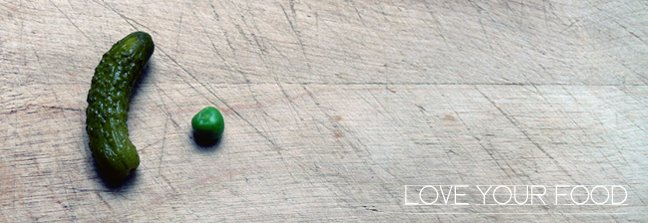I came across
this article by food writer Jeffrey Steingarten on overcoming food phobias. He argues that since human beings are omnivores--that we are basically designed to digest anything--our recent hyper diligence in controlling what we eat is nothing short of mass hysteria. According to Steingarten, only a very small percentage of us have true food allergies such as
lactose intolerance or
celiac desease. Instead, our fear of the consequences of eating forbidden foods rather than physiological necessity prevents us from consuming freely. Informing others of our food "intolerances" is our way of managing these fears to our detriment. We forgo the pleasure of sharing food with one another in favour of feeding what separates us--what makes me unlike you--all for the illusion of safety. With great humour and humility, he recounts how he overcame his own food phobias--including dill, chickpeas and coffee ice cream--ultimately training himself to be the perfect omnivore, free to enjoy all of the tastes life has to offer.
Of course his argument struck me. I have lived a virtually wheat-free diet for almost 10 years. One day out of the blue, I stopped eating wheat because a nutritionist told me I should. I have never been medically diagnosed with a food allergy or intolerance. I don't even know if such a thing is possible. I simply took her word as truth and believed with all of my energy that she was right.
Looking back, her words were music to my ears. The shock of her pronouncement lasted about a minute before I began scheeming how I would enact such a restriction. I have remarkable will power and enjoyed the challenge of removing one of our staple foods from my life. During the last decade, I have credited my growth and success in part to my careful and conscious nutrition. In the story of being me, life before eliminating wheat was fraught with illness and insecurity. By eradicating my enemy, I could finally flourish.
If I think about it, I can see why I have enjoyed this story. I am the heroine of my own epic saga: me vs. the wheat-obsessed world. I have overcome adversity, challenged the status quo, forgiven people their trespasses. Only occasionally do I consume the odd slice of bread. These moments are usually in a restaurant, a fresh-baked loaf sitting before me, waiting. I am by myself, separated from anyone who knows what I never do, and I devour the crusty baguette or the pillowy foccacia feverishly and with wild abandon. I know I am doing something forbidden: something I will regret.
Steingarten says that people can learn to eat anything if they try it eight times. Any child given spinach often enough will learn to like it. Regarding adults, I have only ever heard this said about olives: that if you can stand to eat eight olives in a row, you'll eat them for the rest of your life. To achieve his goal of becoming the perfect omnivore, Steingarten took his list of feared foods and overcame them one by one: eight sprigs of dill, eight chickpeas, eight scoops of coffee ice cream.
When I first read his article, the foods he claimed to have once feared seemed absurd, almost frivolous. How could he not like chickpeas? I imagined my own list of foods that I don't like or are afraid to try and chuckled at the obscurity: okra, natto, lapsang souchong tea, durian, etc. Not in a hundred years would these foods ever appear at a family gathering or at a friend's dinner party; I could easily live an unencumbered life without training myself to enjoy sea urchin or shark fin soup. But now, I'm filled with dread knowing that my real food phobias are of the ones people eat all the time, things like like birthday cake and ice cream, pasta, coffee, wine, milk, macaroni and cheese. These are the foods I have defined myself by in their exclusion from my life. To embrace what I fear, I would be changing who I know myself to be.
I am unsure how I will proceed. I am hesitant to commit myself to the challenge of conquering my food phobias. The excitement I feel at the prospect of being free to enjoy all of life, however, is a powerful incentive. Here is my list of feared foods:
wheat, yeast, milk, coffee, any stinky cheese, brie, cream cheese, buttermilk, ranch dressing, okra, natto, sea urchin, sweetbreads (i.e. pancreas, or is it adrenal gland? they're both on the list), brain, tripe, durian, lapsang souchong, blood pudding, oatmeal, processed cheese, mushrooms, kefir, Guinness, rum, dulse, seaweed, mocha, capers, iced coffee, ice cream, anchovies, raw fish, yak butter tea, real Chinese food, bitters and beef liver
(I'm sure there are other foods to add that I'm forgetting.)
Husband and I have just agreed to eat tonight's dinner at
Grano, one of our favourite Italian restaurants. Although I love their food, given my restrictions, I usually have a total of five items on the menu to choose from. I see a grand opportunity to begin this new quest.
What are your feared foods? Leave a comment with your list and see if you take on the challenge of becoming a perfect omnivore. As scary as it may seem, I think in the long run it's going to be fun.





